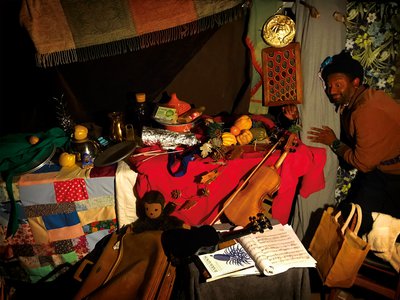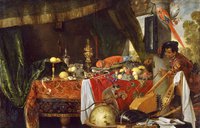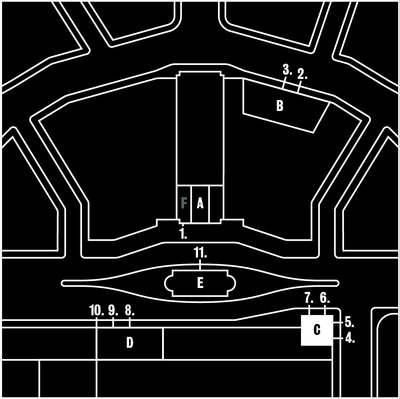04 Still Life with Moor and Parrot Reworked with ingredients for Barbados’ Christmas drink


Originally a 17th-century 'banquet piece' painting showing Dutch colonial riches, Peter has restaged this piece featuring consumable items including dried hibiscus, ginger, rum, sugar, cinnamon and clove.
An increasingly common source for depictions of Black Renaissance subjects as the 17th-century progressed were still life paintings, a genre of artwork especially associated with Dutch painters and with the period of time that has, traditionally, been termed the 'Dutch Golden Age'.
Abundance is the theme here, and each object or item in this painting holds specific meaning: pomegranates, figs, lemons and lobsters signify expensive and exotic items, literally intended for consumption. In contrast, the clock on the table and the mirror on the pillar remind the viewer that time is finite and identity fragile.
The material presence of slavery sat squarely at the heart of these riches. Like the parrot and the monkey, the presence of a Black figure was intended to explicitly convey the painting’s global dimensions and to reflect the commercial interests at the heart of Dutch grandeur.
The title of this painting contains 17th-century terminology which can be considered offensive today.

Jan Davidsz de Heem, 'Still Life with Moor and Parrot', 1641, Museum of the City of Brussels.
Hear the curator, Hannah Murphy, talk about this painting:
Renaissance Skin · Still Life with Moor and Parrot
Strand Campus, Strand, London WC2R 2LS
KCLSU shop, Strand